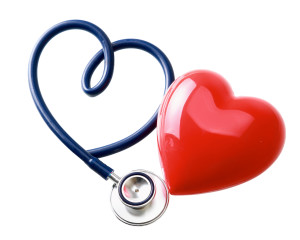 As a woman raising a daughter, you want her to grow into a confident, capable, and healthy woman. After all, in your mind, she is the most beautiful and exceptional girl in the world, and she should realize that too. Understand, however, that your beliefs, attitudes, and comments about your own body are some of the most impactful factors that will dictate how your daughter feels about her own. According to a report by Common Sense Media, five to eight-year-olds who think their mothers are unhappy with their bodies are more likely to feel dissatisfied with their bodies in return. With swimsuit season quickly approaching, now more than ever, learn to break the habit of negative self-image talk and be the confident woman you hope your daughter will be one day too. Keep reading for five tips for learning to be body positive.
As a woman raising a daughter, you want her to grow into a confident, capable, and healthy woman. After all, in your mind, she is the most beautiful and exceptional girl in the world, and she should realize that too. Understand, however, that your beliefs, attitudes, and comments about your own body are some of the most impactful factors that will dictate how your daughter feels about her own. According to a report by Common Sense Media, five to eight-year-olds who think their mothers are unhappy with their bodies are more likely to feel dissatisfied with their bodies in return. With swimsuit season quickly approaching, now more than ever, learn to break the habit of negative self-image talk and be the confident woman you hope your daughter will be one day too. Keep reading for five tips for learning to be body positive.
- Accept that What You See in the Media is Not a Standard to Which You Should Aspire. Your Pinterest, Instagram, and Facebook feeds are likely full of images of celebrities, social media personalities, and even acquaintances who appear to be thinner, fitter, and happier than you. Remind yourself that what you see is only a curated compilation of moments in time and that you don’t have to be waiflike to be happy—because most women aren’t rail thin, and those who are, may not be healthy, or nearly as happy as they appear in your social stream.
- Talk to Your Body Like It’s Your Friend. If your friend were having a bad day, and feeling bad about herself, you wouldn’t agree or toss further insults at her. You’d pick her back up on her feet and remind her of all of her unique qualities. Do the same for your body. After all, you’re going to be together for a long time.
- Spread Your Positivity Around. If you find yourself criticizing yourself, that negativity could manifest into how you perceive others as well. Don’t let yourself become so obsessed with weight, body types, or small insignificant physical details that you find yourself thinking (or saying!) negative comments about other people’s bodies. By remaining positive about others, you will find ways to be positive about yourself. And by being positive about yourself, you will effortlessly be positive about others. It’s a happy cycle.
- Forgive Yourself. If you are trying to eat healthily, go to yoga class, and drink plenty of water, but find it’s not always easy to be consistent while you are running around after your toddler and doing double duty as a mom and a dedicated employee, give yourself a break. Cheat on your diet one day? Forgive yourself and recommit tomorrow. Haven’t seen the scale budge in weeks? Don’t let that be a reason to stop trying to make healthy choices. Forgiveness is an essential predecessor to acceptance, which is a critical step toward happiness.
- Surround Yourself with Positive People. The people in your life can have a detrimental impact on your happiness if they are highly critical, self-deprecating, and unsupportive. You don’t need that level of negativity in your life. By surrounding yourself with people who share your values and appreciation for maintaining a positive body image, you will find that even on a bad day, you have the motivation to remain positive.
Remember, your body image doesn’t only impact you; it affects your daughter too. Be the confident, accepting woman you want your daughter to be, and you’ll both live happy, healthy lives.
More
 Endometriosis is a painful reproductive disease that affects 176 million women across the globe. It is the leading cause of infertility, and chronic pelvic pain, and has been linked to other such complicated and painful conditions as adenomyosis, fibroids, interstitial cystitis, some cancers, and other autoimmune disorders. For the millions of women who suffer painfully with endometriosis, each year we recognize the month of March with a focus on endometriosis education and awareness. Together, with more knowledge of this painful condition and more support for treatment research, we can all work together toward an eventual cure and can start to reduce the number of women suffering from this disease.
Endometriosis is a painful reproductive disease that affects 176 million women across the globe. It is the leading cause of infertility, and chronic pelvic pain, and has been linked to other such complicated and painful conditions as adenomyosis, fibroids, interstitial cystitis, some cancers, and other autoimmune disorders. For the millions of women who suffer painfully with endometriosis, each year we recognize the month of March with a focus on endometriosis education and awareness. Together, with more knowledge of this painful condition and more support for treatment research, we can all work together toward an eventual cure and can start to reduce the number of women suffering from this disease.
What is Endometriosis?
Endometriosis occurs when uterine tissue, known as the endometrium, develops outside of the uterus. Often, the tissue grows inside the pelvic cavity and around the reproductive organs, such as the ovaries, uterus, and fallopian tubes. It may also develop around the uterosacral ligaments, the peritoneum, or in the areas between the rectum, uterus, and vagina, or bladder. In more rare occurrences, the endometrium may develop around the appendix, bladder, bowels, intestines, or rectum.
Doctors do not know what ultimately causes the growth of the endometrium outside of the uterus. This internal condition often goes unnoticed or misdiagnosed and mistreated when it presents itself in the form of painful periods.
Signs and Symptoms
Symptoms of endometriosis may include:
- Painful periods that include pelvic cramping that begins before your period and lasts after it has ended.
- Lower back and abdominal pain that accompanies the pelvic pain surrounding menstruation.
- Pain during or after sex.
- Pain during urination and bowel movements, particularly during menstruation.
- Extremely heavy period bleeding (known as menorrhagia), or bleeding between periods.
- Infertility.
- Fatigue.
- Diarrhea or constipation.
- Bloating or nausea, particularly during menstruation.
Diagnosis and Treatment
Too often, women do not question the pain they experience during their periods or sex. Sometimes they mistakenly assume the discomfort is normal, or they are uncomfortable discussing their symptoms with their doctor. For this reason, endometriosis often goes undiagnosed and untreated until women are trying to get pregnant and experience infertility complications. If you are suffering from any of the symptoms above, and believe you may have developed endometriosis, talk to your OBGYN. He or she will diagnose the cause of your pain because no woman should have to suffer in silence.
Supporting Endometriosis Awareness Month
If you or a loved one are suffering from endometriosis, its painful symptoms, or its infertility complications, there are ways to become involved with efforts to raise support and awareness this month. On March 24, a worldwide Endometriosis March will take place in cities around the world. Visit endomarch.org to find a march near you, or for more information on becoming involved with support efforts in your community.
More
Hashimito’s disease is the type of condition that can slowly sneak up on you without warning. It poses serious risks for women, as its signs and symptoms may not initially be felt, seen, or sensed. Improve your knowledge and awareness of this dangerous, and often undetected disease, so you can give yourself the best opportunity to avoid a delayed diagnosis.
What is Hashimoto’s Disease?
Hashimoto’s disease, also known as chronic lymphocytic thyroiditis, primarily impacts middle-aged women. It is an autoimmune disorder in which your immune system creates antibodies that attack your thyroid gland—the small gland at the base of your neck. Your thyroid gland is an essential element of your endocrine system, as it produces hormones that coordinate many of your bodily functions. Hashimoto’s diseases typically cases inflammation of the thyroid, which can lead to complications of hypothyroidism (an underactive thyroid gland).
Causes and Risk Factors of Hashimoto’s Disease
The causes of this autoimmune disease are not known. Some scientists believe Hashimoto’s disease may be caused by a virus or bacterium, while others believe it may stem from a genetic flaw. Factors that may impact your risk of Hashimoto’s disease include: gender, age, and heredity. More specifically, women are more likely to be diagnosed with Hashimoto’s disease, and while the disease can impact men and women of any age, it is most likely to impact middle age adults.
If members of your family have been diagnosed with a thyroid or autoimmune disease in the past, you also may be at a greater risk of Hashimoto’s disease. Other factors that may increase your risk include having been diagnosed with another auto immune disease, such as lupus, or rheumatoid arthritis, or having been exposed to excessive amounts of environmental radiation.
Signs and Symptoms
Hashimoto’s disease typically progresses slowly over many years, causing chronic thyroid damage. Many of the symptoms of Hashimoto’s disease go undetected, and typically mirror those of hypothyroidism. Talk to your doctor if you experience any of the following common symptoms:
- A swelling at the front of your throat (known as “goiter”)
- Fatigue
- Depression
- Memory lapses
- Muscle aches and stiffness
- Joint pain
- Increased sensitivity to cold temperatures
- Constipation
- Dry, pale skin
- Brittle nails
- A puffy face
- Hair loss
- A swollen tongue
- Unexplained weight gain
Treatment Options
If you’re diagnosed with Hashimoto’s disease, your doctor may recommend treatment with synthetic hormones. Daily hormone replacement therapy may help if you are experiencing thyroid hormone deficiency. Use of daily synthetic hormones may be lifelong, though your doctor will likely regularly check your levels of thyroid-stimulating hormone (TSH) to monitor the proper dosage.
Talk to Your Doctor
If you have questions or concerns about Hashimoto’s disease, or believe you may be experiencing hypothyroidism, talk to your doctor. He/she can help you better understand your risk factors, or provide a diagnosis.
More
It feels like a stroke can happen to anyone, at any time, and it can happen incredibly fast. It is a terrifying condition that seems like it has the power to strike the old, the young, the healthy, the fragile, and everyone in between. While a mild stroke can cause little or no brain damage, a major stroke can cause severe brain damage or even death.
One of the most important ways to protect yourself from the risk of a stroke is to know the signs and symptoms that signal the onset of a stroke event. Early identification of a stroke can help to minimize the long-term damage, and can even save a life. Most stroke victims experience only one or two symptoms before their condition worsens. Take note of all of the potential signs of a stroke listed below to prepare yourself in case you or a loved one ever fall victim to this life-threatening health event.
Signs of a stroke may include:
- Sudden numbness or weakness of the face, arm, or leg (usually on just one side of the body).
- Sudden trouble seeing in one or both eyes.
- Sudden trouble walking, or feelings of dizziness, or a loss of balance.
- Sudden difficulty speaking, understanding speech, or general mental confusion.
- A painful headache that comes on quickly with no known cause.
Women are at risk for unique stroke symptoms as well. These symptoms may include:
- Sudden face and arm or leg pain.
- Sudden hiccups.
- Sudden nausea.
- A sudden sensation of exhaustion.
- Sudden chest pain.
- Sudden shortness of breath.
- Sudden pounding or racing heartbeat.
If you or a loved one experience any of the symptoms listed above, call 9-1-1 immediately.
What You Need to Know About Mini-Strokes
A “mini-stroke,” also called a transient ischemic attack (TIA), occurs when, for a short period of time, the amount of blood that travels to the brain is restricted or slowed. If a mini-stroke occurs, you may or may not experience some of the signs of stroke listed above.
A mini-stroke could last from a few minutes to a full day. The signs can be so subtle that many sufferers do not even know they have suffered a stroke. The greater risk, however, is that a mini-stroke could be a sign that a full stroke is imminent. If you believe that you or a loved one are suffering from a mini-stroke, call 9-1-1 immediately.
Diagnosing a Stroke
To determine if a stroke has occurred, your doctor will conduct an evaluation, asking questions about the symptoms that occurred and their onset. He or she will also test your reflexes to determine if physical damage has occurred. In addition, your doctor may request a computed tomography (CT or CAT) scan, or a magnetic resonance imaging (MRI) scan. He or she may also require an electroencephalogram (EEG) test, an evoked response test, or a blood flow test such as a doppler ultrasound to determine if any changes have occurred in the blood flow to the brain.
By recognizing the potential signs and symptoms of a stroke, and acting fast by calling for emergency responders, you can help to save the life of a loved one—or even your own.
More
 If you’ve ever experienced the searing, burning, indescribable pain that is a urinary tract infection (UTI), then you certainly never want to experience one again. If you are among the lucky ones that have never experienced this painful health condition, count yourself among the fortunate. Regardless if you have experienced a UTI in the past or not, there are several steps that all women can take to stay healthy, and mitigate their risk of experiencing this unpleasant condition.
If you’ve ever experienced the searing, burning, indescribable pain that is a urinary tract infection (UTI), then you certainly never want to experience one again. If you are among the lucky ones that have never experienced this painful health condition, count yourself among the fortunate. Regardless if you have experienced a UTI in the past or not, there are several steps that all women can take to stay healthy, and mitigate their risk of experiencing this unpleasant condition.
- Stay hydrated. Women should drink plenty of water throughout the day for a variety of health reasons, but staying hydrated can also be an effective prevention technique for preventing UTIs. Water helps to dilute your urine, and encourages you to urinate more frequently—two factors that help ensure that the bacteria that can cause a UTI is regularly flushed from your urinary tract. When you urinate, your urine should be a very pale yellow if you are drinking enough water.
- Hydrate after sex too. Also, be sure to drink a full glass of water after sex, and immediately empty your bladder after intercourse. These two practices will again help to flush unwanted bacteria out of your urinary tract.
- Wipe front to back. After a bowel movement, be sure to wipe from the front to the back, and never wipe twice with the same tissue. Following proper cleansing techniques can prevent pathogenic bacteria that originates in the anal region from spreading to your vagina and urethra, where it can cause a UTI.
- Carefully choose feminine products. Irritating feminine hygiene products, such as certain douches, powders, and deodorant sprays, can irritate your urethra, and lead to infection.
- Choose tampons over sanitary napkins. Unlike sanitary napkins or pads, tampons keep the bladder opening area drier, which limits the possibility of bacterial growth.
- Urinate frequently. Avoid long periods of time in between urinating. Aim to empty your bladder completely at least once every four hours during the day to mitigate the risk of bacterial build-up.
- Consider changing your birth control. If you use diaphragms, or unlubricated or spermicide-treated condoms, these forms of birth control can put you at risk of bacterial growth that can cause a UTI.
- Wear loose clothing. Tight-fitting undergarments and non-breathable materials can encourage moisture build-up, which can lead to maceration of the skin and bacterial overgrowth. Choose breathable underwear to prevent contamination of the bladder opening area.
- Choose showers over baths. Avoid soaking in bathwater for prolonged periods of time. Bath water can become contaminated with skin florae as you bathe, and allow bacteria to reach the bladder opening area.
If you have any questions or concerns about your risk for developing a UTI, speak with your OBGYN. If you feel you may be experiencing UTI symptoms, be sure to contact your docotor immediately so that he or she can prescribe treatment and set you on the road to recovery.
More
 When does a few consecutive sleepy days turn into a more general malaise and fatigue that could be indicative of a larger problem? The average adult needs seven and a half to nine hours of sleep per night. Whether you are meeting your nighttime sleep goals or not, if you are consistently experiencing an overwhelming fatigue that is impacting your lifestyle, talk to your doctor. You may be able to improve your snooze with a few lifestyle changes, or you may need to treat an underlying health condition.
When does a few consecutive sleepy days turn into a more general malaise and fatigue that could be indicative of a larger problem? The average adult needs seven and a half to nine hours of sleep per night. Whether you are meeting your nighttime sleep goals or not, if you are consistently experiencing an overwhelming fatigue that is impacting your lifestyle, talk to your doctor. You may be able to improve your snooze with a few lifestyle changes, or you may need to treat an underlying health condition.
What Does Chronic Fatigue Feel Like?
Everyone has experienced sleepiness at some point, but chronic fatigue is a much more overwhelming and debilitating condition. It is a lingering tiredness that is constant and limiting.
What Causes Feelings of Fatigue?
The following factors could be causing your consistent sleepy sensations:
- Not enough hours of sleep per night
- An unhealthy diet
- Regular use of alcohol
- Regular use of recreational drugs
- A rigorous daily exercise routine or a physically demanding job
- Stress
- Obesity
- Insufficient daily physical activity
- Jet lag
- Medications that cause drowsiness, such as antihistamines
- A recent concussion
- Grief
- Medical treatments such as chemotherapy or radiation therapy
If you are experiencing feelings of unrelenting exhaustion, and if you believe it is not related to any of the factors on the list above, talk to your doctor. He or she may test you for one of the following more complex health conditions that has been known to cause fatigue:
- Cancer
- Major depressive disorder
- Diabetes
- Chronic kidney disease
- Sleep apnea
- Chronic obstructive pulmonary disorder (COPD)
- Acute liver failure
- Anemia
- Anxiety
- Chronic infection or inflammation
- Emphysema
- Heart disease
- Hyperthyroidism (an overactive thyroid)
- Hypothyroidism (an underactive thyroid)
- Inflammatory bowel disease (IBD)
- Multiple sclerosis
Chronic Fatigue Syndrome
An additional potential cause of persistent feelings of fatigue is a condition that, according to the Centers for Disease Control and Prevention (CDC), impacts over one million people in the United States. Chronic fatigue syndrome (CFS) is a physical condition marked by overwhelming fatigue and weakness that makes it difficult to perform daily tasks. Those who suffer from CFS often report difficulty getting out of bed, dressing, and eating. No amount of sleep or rest can eliminate the feelings of exhaustion experienced by CFS sufferers.
While the cause of CFS is not known, it is believed that the condition may be caused by a dysfunction of the immune and central nervous syndrome. If CFS is the cause of your fatigue, your doctor will be able to diagnose the condition and prescribe a treatment plan.
More
 We’ve all been there. It’s Friday night and you decide to stay in with your husband. Half way through the movie, you’ve fallen asleep on the couch, and the next morning, you’re left trying to explain why couldn’t stay awake past 9:30 p.m. If you’re constantly feeling like you require more hours of sleep each night than your husband, know that there is science to help support your sleepiness. Studies show that women’s brains are more complex than those of their male counterparts, resulting in a greater need for more nighttime ZZZ’s.
We’ve all been there. It’s Friday night and you decide to stay in with your husband. Half way through the movie, you’ve fallen asleep on the couch, and the next morning, you’re left trying to explain why couldn’t stay awake past 9:30 p.m. If you’re constantly feeling like you require more hours of sleep each night than your husband, know that there is science to help support your sleepiness. Studies show that women’s brains are more complex than those of their male counterparts, resulting in a greater need for more nighttime ZZZ’s.
According to researchers, women tend to use more of their brains on a daily basis. Women are more likely to spend time multi-tasking, a behavior that maximizes their brains and requires more energy. To help revive them each night, women need about an extra 20 minutes of sleep compared to men.
Despite the fact that women need slightly more sleep than men, they are often pushing their bodies to the limit and are too often running on empty. Just a few of the reasons why women tend to get less overall sleep than men include such factors as being awoken by their male partners or children, pregnancy, and greater levels of stress and worry. The consequences of such exhausting behavior can be severe. Research has found that women who don’t get enough sleep are at risk of suffering from depression and are more likely to experience feelings of anger and hostility.
As if these side effects weren’t enough to make you start turning in early, researchers have also found that women who don’t get enough sleep are at a greater risk of overeating throughout the day. Data supports that women who go to bed earlier eat over 200 calories less than those who stayed up later. In addition, research finds that women who go to bed between 7:00 p.m. and 11:00 p.m. each night are more likely to eat healthy foods such as fruits, vegetables, and foods high in fiber. Women who stay up later, however, tend to eat more processed meats, foods higher in saturated fats, and consume more caffeine.
If you are among the millions of women suffering from lack of sleep and its side effects, know that you can obtain more hours of higher quality sleep at night by making small, simple changes to your daily routine. Follow these steps to get more quality nighttime shuteye:
- Plan to go to bed and wake up at the same time every day, even on weekends.
- Avoid consuming alcohol before bed.
- Reduce the amount of daily caffeine you consume.
- Eat your bigger meals earlier in the day.
- Try not to drink too much liquid before bed.
- While napping can help your body catch-up on lost sleep, avoid the temptation if it makes it difficult for you to go to bed at your normal bedtime.
If you believe you aren’t getting enough regular sleep, start listening to your body and make a plan to prioritize your health and wellbeing by striving for a better night’s sleep. Your body, mind, and soul will thank you.
And if you are having trouble falling or staying asleep, talk to your doctor. He/she can help you develop a plan to get back on a healthy routeneTru.
More
The feeling of having to go all the time can be frustrating and disruptive. There is no need to feel embarrassed or to feel like you need to hide your suffering. Feelings of frequent urination, or experiencing the sudden urge to urinate that you can’t control, also known as overactive bladder (OAB), is more common than you may realize. The Urology Care Foundation estimates that approximately 33 million Americans have overactive bladder, and that at least 40 percent of all women in the United States live with OAB symptoms. If you are suffering from OAB, know that you are not alone, and that there are solutions to help you manage your symptoms and start taking back control of your schedule.
The Causes of Frequent Urination
There are a variety of factors that could be causing your frequent urination in women, including:
- Type I or type II diabetes.
- Pregnancy.
- Stroke or other neurological diseases.
- A urinary tract infection (UTI).
- Bladder cancer.
- Bladder dysfunction.
- Radiation therapy.
- Interstitial cystitis, a condition characterized by pain in the bladder and pelvic region and frequent urination.
- The use of diuretics, which are medications used to treat high blood pressure or fluid buildup that often result in frequent urination.
The Causes of OAB
OAB occurs when the muscles of the bladder contract involuntarily even when the volume of urine in your bladder is low, creating an urgent need to urinate. Conditions that cause OAB include:
- Diuretic use.
- An acute UTI.
- Constipation.
- Excess consumption of caffeine or alcohol.
- Declining cognitive function due to aging.
- Incomplete bladder emptying.
- Difficulty walking which can lead to bladder urgency if you’re unable to get to the bathroom quickly.
- Bladder abnormalities including tumors or bladder stones.
- Neurological disorders including Parkinson’s disease, strokes, and multiple sclerosis.
- High urine production which may be the result of high fluid intake, poor kidney function or diabetes.
Treatment Options
Know that you do not need to suffer from frequent urination or OAB. Treating the underlying cause of your condition, such as diabetes or a UTI, will help to manage your symptoms. In addition, behavioral therapy treatment options for OAB include the following:
- Bladder retraining. Increasing the intervals between using the bathroom over a 12-week time period can help retrain your bladder to hold urine longer.
- Diet modification. Avoiding foods that may act as diuretics can reduce symptoms. Such foods include caffeine, alcohol, carbonated drinks, tomato-based products, chocolate, artificial sweeteners, and spicy foods. Eating high fiber foods can also alleviate symptoms of constipation, which can be a cause of OAB.
- Mange your fluids. Drink enough water to prevent constipation, but avoid drinking fluids right before bedtime.
- Kegel exercises. Strengthen the muscles around the bladder and urethra by exercising your pelvic muscles.
Whether you are suffering from frequent or accidental urination, talk to your doctor today. He or she can help you to determine the underlying cause of your symptoms and together you can develop a treatment plan that will help you to take back control and manage your trips to the bathroom.
More

As women, we have a number of bodily behaviors we must closely monitor, but it can be difficult to know what is considered “normal,” and what is considered “abnormal,” when you are a sample size of one. Women should always feel comfortable speaking with their gynecologists about any concerns that they may have. Asking, “Is that normal?” is a smart way to stay informed, and stay safe. If you have been asking yourself if your level of uterine bleeding is normal, consider the following factors, and as always, never be afraid to ask your doctor.
What is Normal Uterine Bleeding?
Normal uterine bleeding, also known as vaginal bleeding, or menorrhea, is characterized by the periodic blood flow from the uterus. Normal vaginal bleeding occurs as a result of cyclic hormonal changes.
What is Abnormal Vaginal Bleeding?
In general, abnormal bleeding is defined as a flow of blood from the vagina that occurs either at the wrong time during the menstrual cycle, or in inappropriate amounts. In women who are ovulating regularly, it typically involves excessive, frequent, irregular, or decreased bleeding. More specifically, the following are considered abnormal:
- Bleeding between periods.
- Bleeding after sex.
- Spotting anytime in the menstrual cycle.
- Bleeding after menopause.
- Bleeding for too long a period of time, known as hypermenorrhea, or menstrual cycles that are longer than 35 days.
- Bleeding for too short a period of time, known as hypomenorrhea, or menstrual cycles that last fewer than 21 days.
- A menstrual period that occurs too frequently, known as polymenorrhea.
- A menstrual cycle that does not occur frequently enough, known as oligomenorrhea.
- The lack of menstruation for three to six months, known as amenorrhea.
- If the volume of blood is too much, known as menorrhagia.
- If the volume amount of blood is too little, known as hypomenorrhea.
Diagnosing Abnormal Bleeding
To determine if what you are experiencing is normal or abnormal, your gynecologist will need to know the following:
- Your personal and family health history.
- The timing of your typical menstrual cycle.
- The typical pattern of your bleeding, including the days, lengths, flow type (light, medium, heavy, or spotting).
- If you are ovulating.
- If you are pregnant.
Causes of Abnormal Bleeding
If you are experiencing prolonged bleeding at irregular intervals after not having a menstrual period for several moths, it may be a sign that you are not ovulating regularly.
- Unless you are newly pregnant, the bleeding may be associated with complications such as miscarriage or ectopic pregnancy.
- Growths or problems in or around the uterus.
- Blood-clotting problems.
- Changes in hormone levels.
If you are monitoring your menstrual cycles and monthly blood flow and believe you may be experiencing abnormal levels of bleeding, talk to your doctor. He or she will help you determine what is normal for you, and help you address the underlying reasons for anything out of the ordinary.
And if you are looking for a new gynecologist and live in the Western New York area, please give our practice a call. We are accepting new patients.
More
 February is American Heart Month. Throughout the month of February, organizations such as the American Heart Association work to raise awareness, financial support, and education for the nation’s number one killer. Cardiovascular disease, including heart disease, stroke, and high blood pressure, is responsible for one out of every three deaths, and is a leading cause of serious illness and disability across the nation. On February 5, the nation will place a special emphasis on the risks of heart disease for women on National Wear Red Day, a day of support for the Nation’s Go Red for Women movement. This February 5, take the time to learn about the risk factors that you face in your own life and how you can lead a heart healthy lifestyle. Start your search for knowledge by calculating your heart age.
February is American Heart Month. Throughout the month of February, organizations such as the American Heart Association work to raise awareness, financial support, and education for the nation’s number one killer. Cardiovascular disease, including heart disease, stroke, and high blood pressure, is responsible for one out of every three deaths, and is a leading cause of serious illness and disability across the nation. On February 5, the nation will place a special emphasis on the risks of heart disease for women on National Wear Red Day, a day of support for the Nation’s Go Red for Women movement. This February 5, take the time to learn about the risk factors that you face in your own life and how you can lead a heart healthy lifestyle. Start your search for knowledge by calculating your heart age.
Heart Age
Our lifestyles, diets, activity levels, and even genes, all impact the overall health of our hearts. Most American adults have a heart that is older than their actual age. Your heart age is the age of your heart and blood vessels as a result of your risk factors for heart attack and stroke. Some uncontrollable risk factors include family history. There are other risk factors, however, that can be managed through healthy lifestyle habits and behaviors.
Manageable factors that can age your heart include:
- Smoking
- High blood pressure
- High cholesterol
- Obesity
- An unhealthy diet
- A sedentary lifestyle
The good news is that you can make lifestyle changes to improve the age of your heart and reduce your risk for heart attack and stroke. Calculate your heart age using this free tool from Heartage.com. It takes into consideration your age, sex, systolic blood pressure, body mass index (BMI), and history of hypertension, smoking, and diabetes.
The Importance of Heart Age
Your goal should be to have a heart age that is the same or younger than your actual age. According to data collected by the CDC, approximately 69 million American adults that have not suffered a heart attack or stroke have a heart age that is 5 or more years older than their actual age. What’s more alarming, approximately one in two men and two in five women have heart ages five or more years older than their actual age.
Healthy Changes
If you find that your heart is older than your current age, know that you can make changes to improve your health. Focus on improving the following factors:
- Improve your diet – Make an effort to reduce the amount of high-sugar, high-fat, and packaged goods in your diet and replace them with a diet high in vegetables, fruits, whole grains, beans, and lean meats.
- Get active – Maintaining an active lifestyle can help lower your cholesterol and improve your BMI. Aim to get at least 30 minutes of moderate activity three to five days a week.
- Manage your cholesterol – Talk to your physician about a plan to lower your cholesterol and keep it managed long-term.
- Become a non-smoker – If you smoke today, make a plan to quit. If you are a non-smoker who is frequently exposed to secondhand smoke, find ways to limit your ongoing exposure.
This year, make American Heart Month personally meaningful. Learn your heart age, make a plan to manage your risk factors, and plan to celebrate your improvements next February.
More
 As a woman raising a daughter, you want her to grow into a confident, capable, and healthy woman. After all, in your mind, she is the most beautiful and exceptional girl in the world, and she should realize that too. Understand, however, that your beliefs, attitudes, and comments about your own body are some of the most impactful factors that will dictate how your daughter feels about her own. According to a report by Common Sense Media, five to eight-year-olds who think their mothers are unhappy with their bodies are more likely to feel dissatisfied with their bodies in return. With swimsuit season quickly approaching, now more than ever, learn to break the habit of negative self-image talk and be the confident woman you hope your daughter will be one day too. Keep reading for five tips for learning to be body positive.
As a woman raising a daughter, you want her to grow into a confident, capable, and healthy woman. After all, in your mind, she is the most beautiful and exceptional girl in the world, and she should realize that too. Understand, however, that your beliefs, attitudes, and comments about your own body are some of the most impactful factors that will dictate how your daughter feels about her own. According to a report by Common Sense Media, five to eight-year-olds who think their mothers are unhappy with their bodies are more likely to feel dissatisfied with their bodies in return. With swimsuit season quickly approaching, now more than ever, learn to break the habit of negative self-image talk and be the confident woman you hope your daughter will be one day too. Keep reading for five tips for learning to be body positive.





